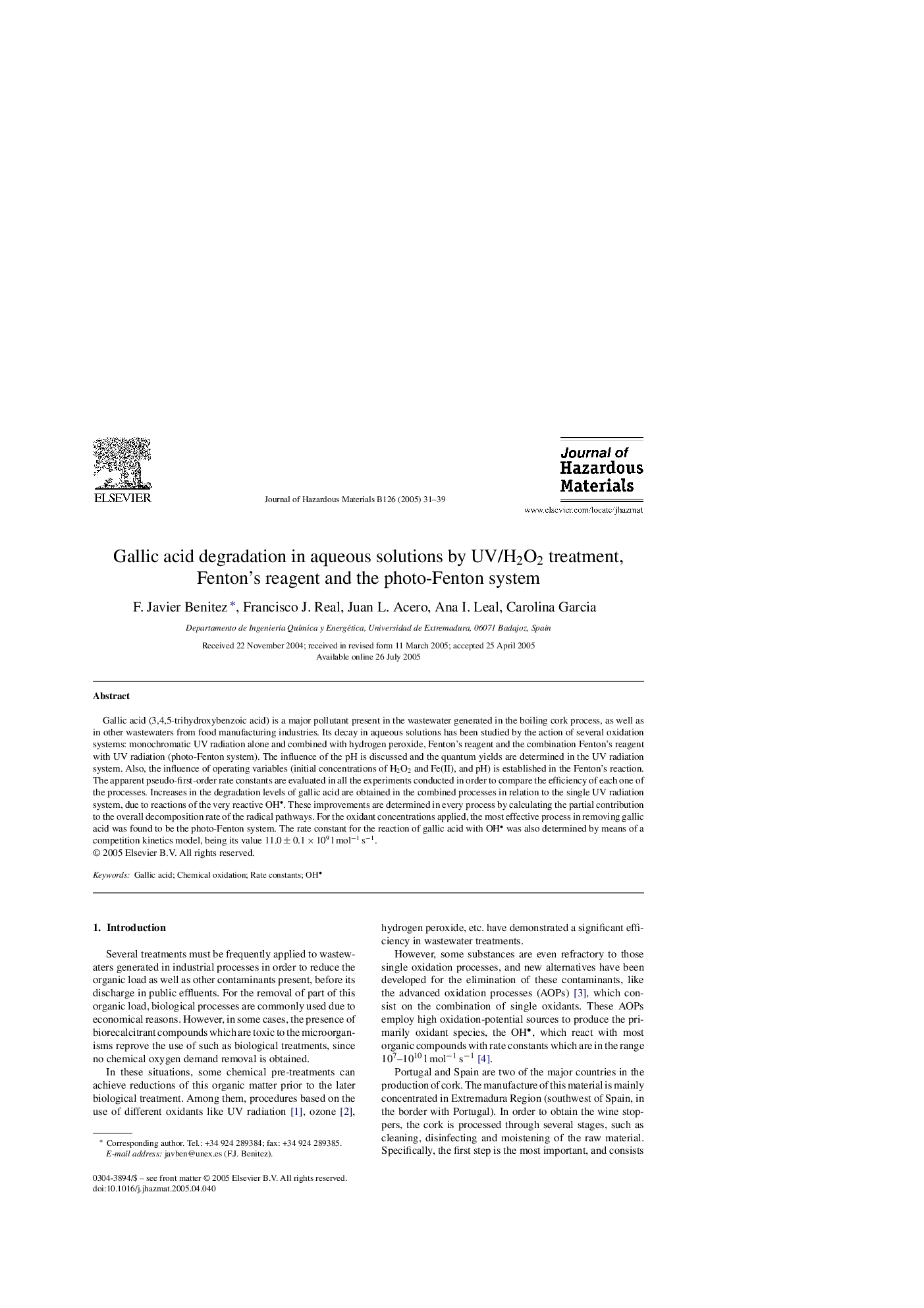| Article ID | Journal | Published Year | Pages | File Type |
|---|---|---|---|---|
| 9674091 | Journal of Hazardous Materials | 2005 | 9 Pages |
Abstract
Gallic acid (3,4,5-trihydroxybenzoic acid) is a major pollutant present in the wastewater generated in the boiling cork process, as well as in other wastewaters from food manufacturing industries. Its decay in aqueous solutions has been studied by the action of several oxidation systems: monochromatic UV radiation alone and combined with hydrogen peroxide, Fenton's reagent and the combination Fenton's reagent with UV radiation (photo-Fenton system). The influence of the pH is discussed and the quantum yields are determined in the UV radiation system. Also, the influence of operating variables (initial concentrations of H2O2 and Fe(II), and pH) is established in the Fenton's reaction. The apparent pseudo-first-order rate constants are evaluated in all the experiments conducted in order to compare the efficiency of each one of the processes. Increases in the degradation levels of gallic acid are obtained in the combined processes in relation to the single UV radiation system, due to reactions of the very reactive OH. These improvements are determined in every process by calculating the partial contribution to the overall decomposition rate of the radical pathways. For the oxidant concentrations applied, the most effective process in removing gallic acid was found to be the photo-Fenton system. The rate constant for the reaction of gallic acid with OH was also determined by means of a competition kinetics model, being its value 11.0 ± 0.1 Ã 109 l molâ1 sâ1.
Related Topics
Physical Sciences and Engineering
Chemical Engineering
Chemical Health and Safety
Authors
F. Javier Benitez, Francisco J. Real, Juan L. Acero, Ana I. Leal, Carolina Garcia,
